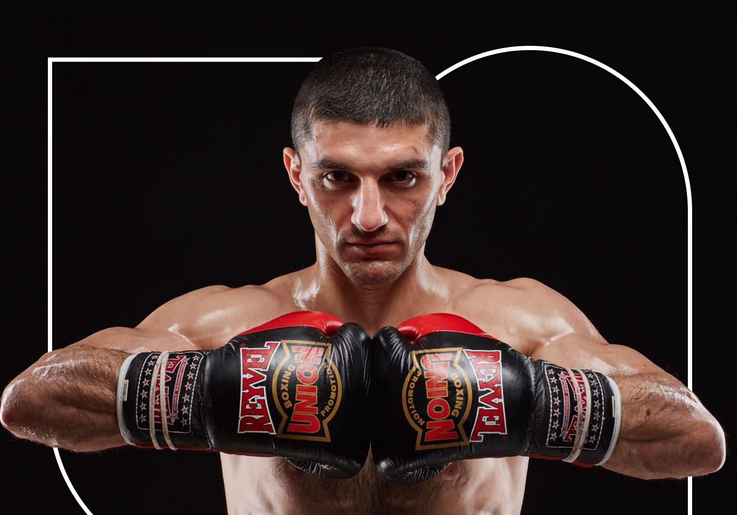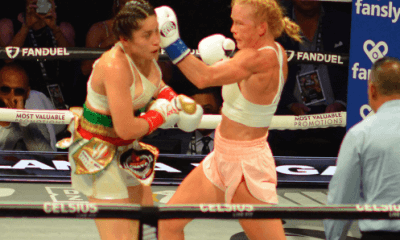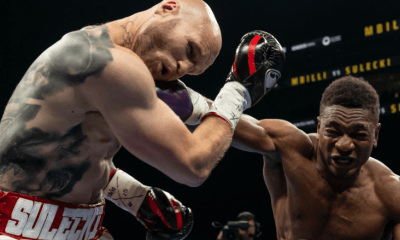Featured Articles
Three Fascinating Matches Gird an Otherwise Soft January Boxing Slate

Three Fascinating Matches Gird an Otherwise Soft January Boxing Slate
After a flurry of important fights in late December, things have slowed down. However, while it’s a very soft January, there are some solid match-ups as reflected in the betting lines.
A case in point is the world flyweight title fight in Osaka, Japan on Tuesday, Jan. 23. In his seventh defense of the WBA title, Artem Dalakian opposes Seigo Yuri Akui. While this reporter doesn’t know enough about the challenger to make a recommendation, it yet struck me as odd that Dalakian (pictured) will enter the ring as the underdog assuming the odds hold up. At last look, Akui was a narrow (13/10) favorite.
Dalakian, who is undefeated (22-0, 15 KOs), hails from the Ukraine via Azerbaijan. A year ago, in these pages, the noted Scottish boxing historian Matt McGrain wrote that he and Sunny Edwards were the top flyweights in the world. In the interim, it goes without saying, Jesse “Bam” Rodriguez, who turned in a masterclass against Edwards on Dec. 16, surpassed them both. So, that presumably makes Dalakian the second-best fighter in his weight class.
The major concern with Dalakian is his age, 36. As a rule of thumb, fighters in the lower weight classes don’t age as well as bigger fighters. As for the 28-year-old Akui (18-2-1, 11 KOs), he’s been stopped twice. Earlier in his career he was TKOed by Junto Nakatani. No shame there as Nakatani takes a back seat to none of his countrymen save for the monster that is Naoya Inoue, but a loss by TKO to unexceptional Jaysever Abcede sticks out like a sore thumb.
Akui has seemingly gotten a lot better since that mishap, having won six straight, most recently 10-round shutouts over veteran Takuya Kogawa (32-6-1) and the euphonic Jayson Vayson (10-0-1).
Dalakian vs. Akui is being conjoined with a light flyweight title bout between long-reigning WBC belt-holder Kenshiro Teraji and Venezuela’s Carlos Canizales. Viewers in the U.S. can catch the action in the wee hours of the morning on ESPN+.
Jan. 20
Three days before the show in Tokyo, Natasha Jonas (14-2-1, 9 KOs) will touch gloves with Mikaela Mayer (19-1, 5 KOs) in Liverpool, England. At last glance, Jonas, who will have home field advantage, was a 7/5 favorite.
At stake will be Jonas’s world welterweight title. She previously held a world title at 154, but dropping down in weight was no problem as she had never carried more than 149 ¼ pounds since leaving the amateur ranks. One of her two losses came at the hands of Irish superstar Katie Taylor and she was very competitive in that fight, losing by only 1 point on two of the scorecards.
Akin to Jonas, Mayer had a wealth of international amateur experience before turning pro. She won a world title at 130 pounds and although she has jumped up three weight classes since then, she was the bigger fighter when they stood face-to-face at the weigh-in. At age 33, Mikaela is six years younger than Jonas, seemingly a big edge in her favor although she discounts it, noting that female fighters mature later than their male counterparts. A SoCal native who does most of her training in Las Vegas, Mayer is appearing in England for the fourth straight time, but this will be her first fight in England against a British opponent.
Jonas vs. Mayer will be televised on Sky Sports in the U.K. and on ESPN+
Jan. 27
A week later in Phoenix, Arizona, Tijuana’s Jaime Munguia (42-0, 33 KOs) meets London southpaw John Ryder (32-6, 18 KOs) in a 12-round super middleweight contest televised worldwide on DAZN. Munguia is a consensus 3/1 favorite which in boxing (unlike baseball, for example) is considered a short price for a favorite.
We last saw Ryder on Cinco de Mayo weekend of last year when he was roundly defeated by Canelo Alvarez before 50,000-plus at an outdoor stadium on the outskirts of Guadalajara. To Ryder’s credit, he was still standing at the final bell.
A month later, Munguia tangled with Ukrainian tough guy Sergiy Derevyanchenko in the main go of a card in Ontario, CA. The 12-round fight was a humdinger, earning the nod as the TSS 2023 Fight of the Year. Munguia scored a knockdown in the final round to gut out a razor-thin decision.
Jaime Munguia, 27, had his coming-out party in 2018 when he captured a world title at 154 pounds with a four-round blast-out of Sadam Ali. He subsequently moved up to middleweight and now competes at 168. While his knockout punch hasn’t traveled with him, he will have youth on his side (Ryder is 35) and will have the crowd in his corner in Arizona.
This will be Munguia’s first fight under the tutelage of Freddie Roach. If he wins without accruing any damage, he will reportedly move to the head of the line in the Canelo Alvarez sweepstakes.
To comment on this story in the Fight Forum CLICK HERE
-

 Featured Articles3 weeks ago
Featured Articles3 weeks agoAvila Perspective, Chap. 330: Matchroom in New York plus the Latest on Canelo-Crawford
-

 Featured Articles1 week ago
Featured Articles1 week agoVito Mielnicki Jr Whitewashes Kamil Gardzielik Before the Home Folks in Newark
-

 Featured Articles4 weeks ago
Featured Articles4 weeks agoAvila Perspective, Chap 329: Pacquiao is Back, Fabio in England and More
-

 Featured Articles3 weeks ago
Featured Articles3 weeks agoOpetaia and Nakatani Crush Overmatched Foes, Capping Off a Wild Boxing Weekend
-

 Featured Articles2 weeks ago
Featured Articles2 weeks agoCatching Up with Clay Moyle Who Talks About His Massive Collection of Boxing Books
-

 Featured Articles3 weeks ago
Featured Articles3 weeks agoFabio Wardley Comes from Behind to KO Justis Huni
-

 Featured Articles1 week ago
Featured Articles1 week agoMore Medals for Hawaii’s Patricio Family at the USA Boxing Summer Festival
-

 Featured Articles4 weeks ago
Featured Articles4 weeks agoDelving into ‘Hoopla’ with Notes on Books by George Plimpton and Joyce Carol Oates





















